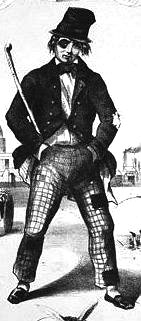Venue Type & Location
Overview
Address: 123 Front Street
An entertainment and educational facility, unique in the city.
DETAILS OF SITE LOCATION: The Cyclorama was built adjoining the Walker House Hotel on the west side, both on the south side of Front Street just west of York Street. Its street address was 123 Front Street West.
Boundary History: The boundaries of the lot were not large, and the building filled most of the lot. A narrow north/south laneway separated the Cyclorama from the Walker House. The large lot south of both the Cyclorama and Walker House was occupied by the old Union Station.
CURRENT USE OF PROPERTY: The property is currently occupied by University Place.
HISTORICAL DESCRIPTION: The Cyclorama was built in 1887 by the Toronto Art Company as a showroom for instructional art of the time. The building opened to the public on September 13, 1887. As its name implies, the Cyclorama was a circular building designed by architects Kennedy and Holland. Inside were panoramic murals on the walls in a continuous band, and these were of a religious nature. In its time, the murals were considered a major attraction. Today, it would be the design of the circular building which would attract attention. With the advent of moving pictures, the Cyclorama became superseded as an attraction. For some years, the building served the Petrie Machinery Company as factory space; then the Elgin Ford Company took over the building as a showroom for automobiles. Its final days were as a parking garage. Although the Cyclorama was listed on the City's Inventory, it was demolished in 1976 to make way for the construction of University Place.
"Cyclorama" Toronto Historical Association. Accessed 10 Jul 2017. torontohistory.net/cyclorama.html
Built in 1887 and owned by Toronto Art Exhibit Co. Ltd., the Cyclorama was the focus of attention even before it was finished. Many passing the site wondered about the sixteen-sided building rising from the ground directly in front of Old Union Station. On the 12th September that year the first guests payed the 25-cent admission fee and ventured inside. Hanging floor-to-ceiling on all sides of the building were giant oil paintings depicting the Battle of Sedan, a decisive conflict in the Franco-Prussian war of the 1870s.
The paintings were joined to provide a full panorama from the viewing platform in the centre of the room and the perspective was carefully calculated to make it appear as though the viewer was really looking out over the scene. Actors played out the roles of soldiers in the foreground, providing sound effects and sometimes smoke to add mood. Toronto Illustrated, a promotional booklet for the city printed in 1893, cooed about the "vivid and life-like" image quality of the paintings, the work of Austrian landscape painter August L
Cycloramas were a popular attraction in major European and North American cities in the latter part of the 19th century. Often showing important historical battle scenes, the touring installations would hang for several months at a time. Toronto's Cyclorama featured only a handful of exhibits in its time: the Battle of Sedan, Battle of Gettysburg, Battle of Waterloo and Jerusalem on the Day of the Crucifixion, but maintained a dedicated following.
A reporter from the Toronto Daily Mail smitten with the "striking groups and striking incidents" in the Battle of Sedan installation described one panel showing a pair of mounted German officers, one fatally wounded, riding toward the viewer. "The figures stand out boldly; the horses will be upon you in a minute; the nerveless, swaying movement of the wounded man contrasts dramatically, yet naturally, with the strength, determination and martial acts of his generous comrade."
Despite its popularity, the Cyclorama ran into financial trouble as the new century approached and silent movies entered theatres. The city seized the property to recover tax arrears before the end of the 1890s. Plans to turn the building into a boxing venue or swimming pool were put forward but never realized. Instead, Petrie Machinery purchased the vacant building from the city and converted it into a showroom.
The building was altered in the 1920s for use as a parking garage for the newly constructed Royal York Hotel located just a block away. Elgin Motors took over the property in the 40s and used it as a showroom for several years. Finally, back in use as a parking garage for Avis car rentals, the building was demolished along with the Walker House Hotel in 1976 to make way for the Citigroup Place building that occupies the location today.
Staff. "A brief history of the Cyclorama Building in Toronto." blogTO. 6 Jan 2012. Accessed 10 Jul 2017. www.blogto.com/city/2012/01/a_brief_history_of_the_cyclorama_building_i…

